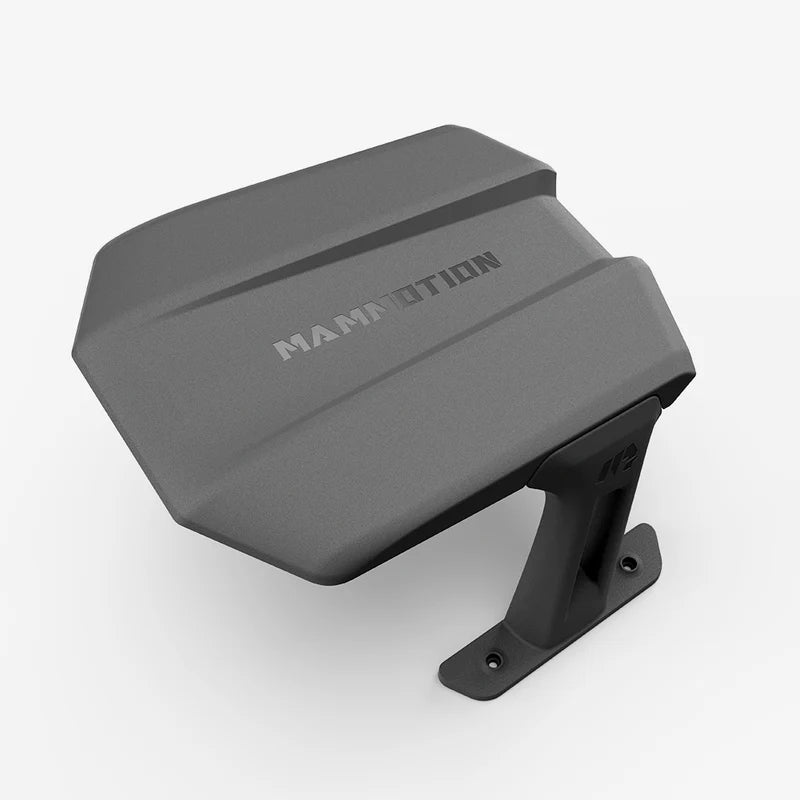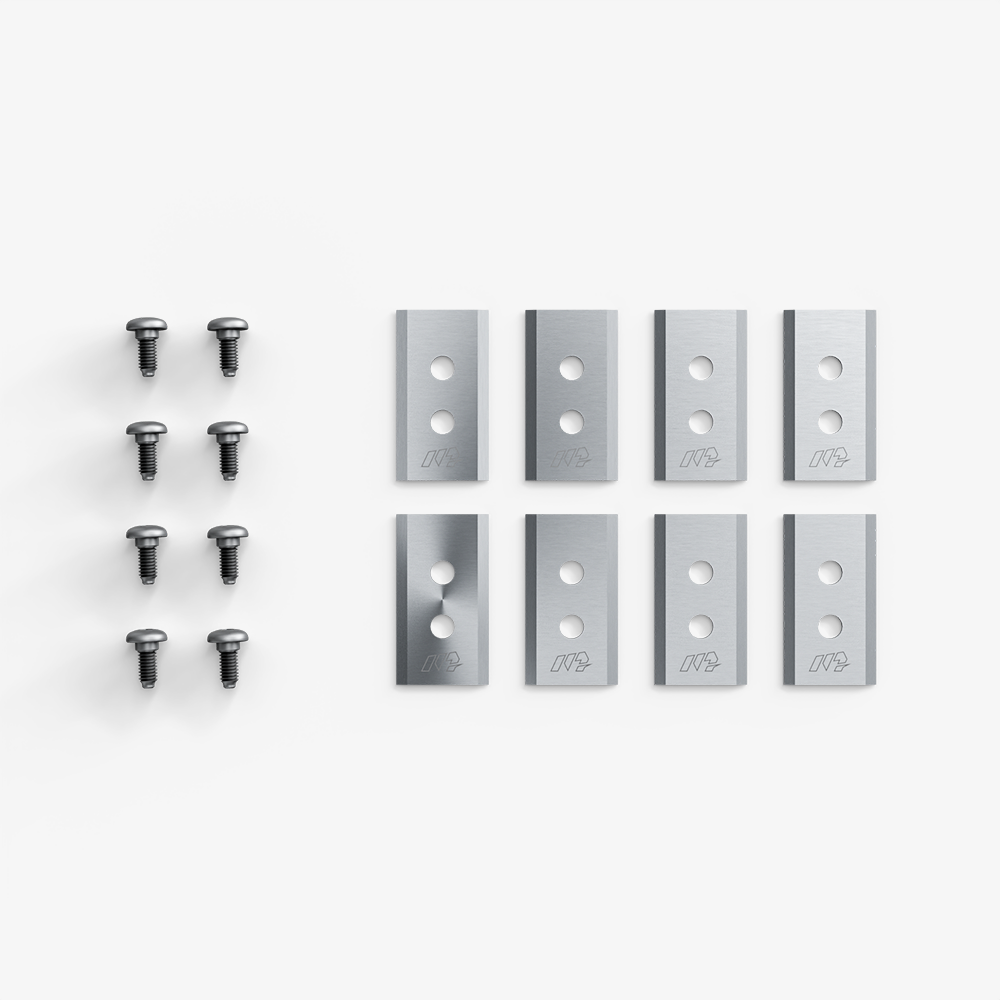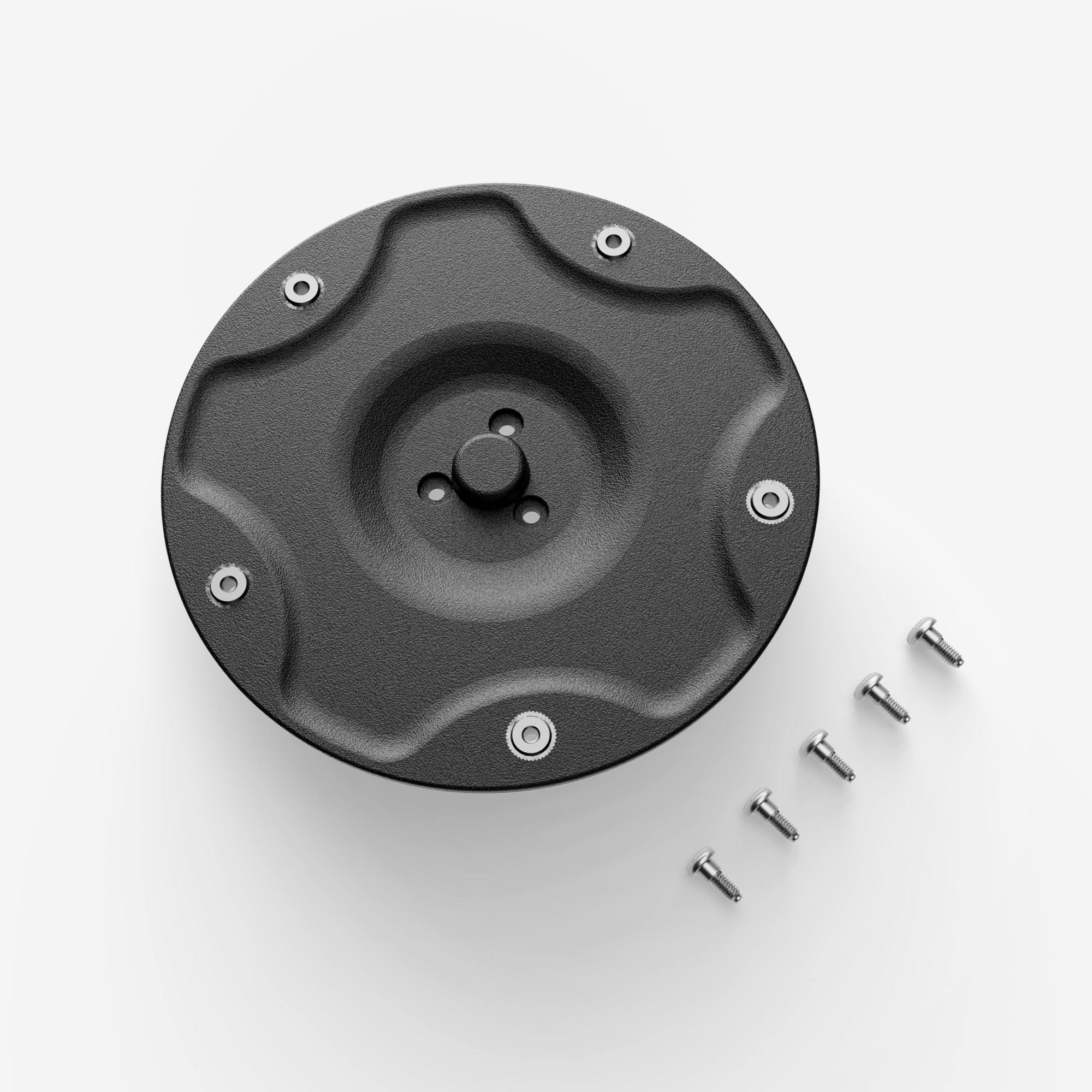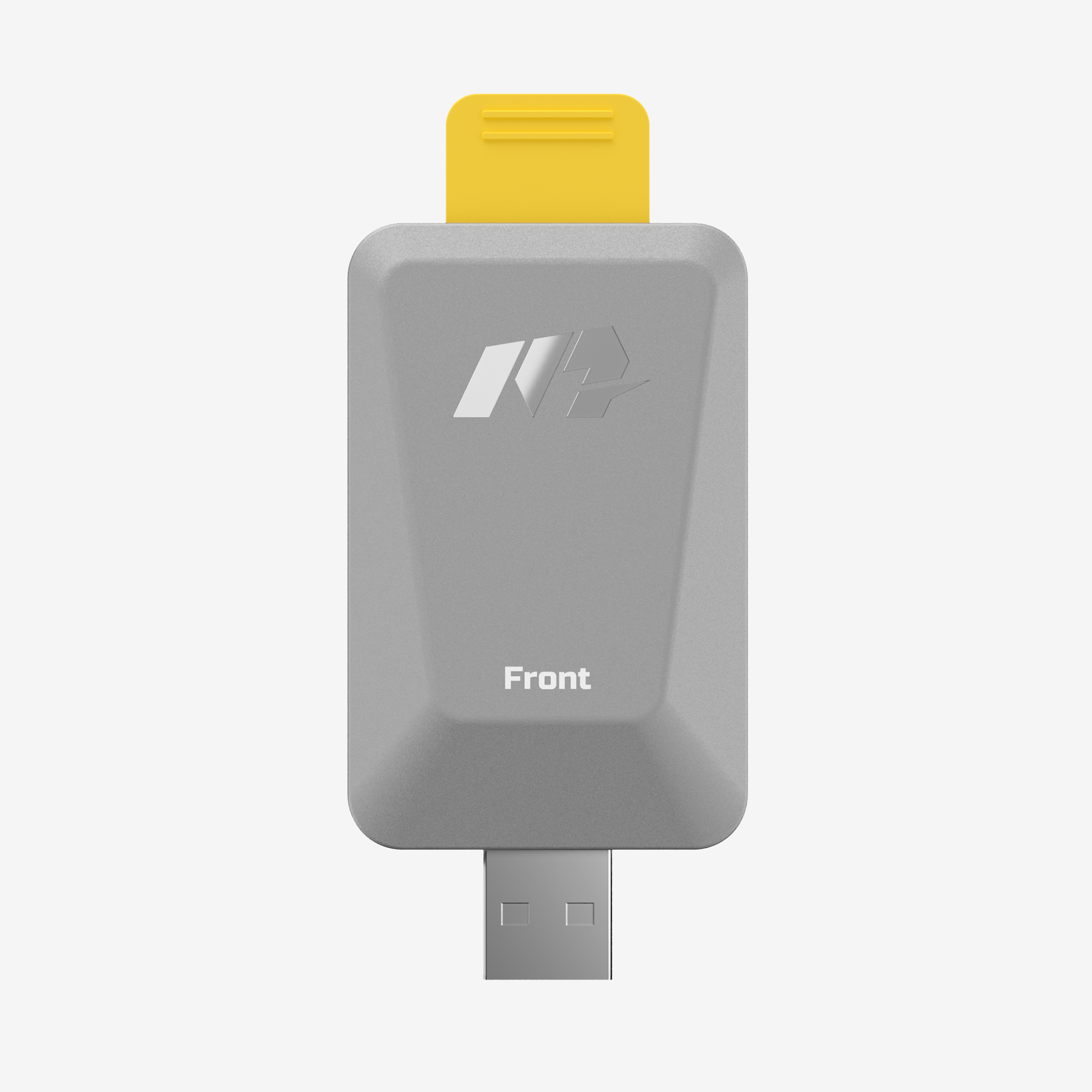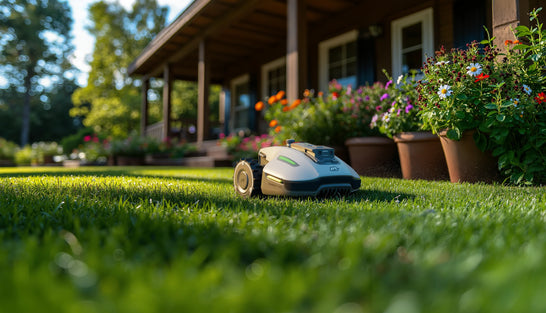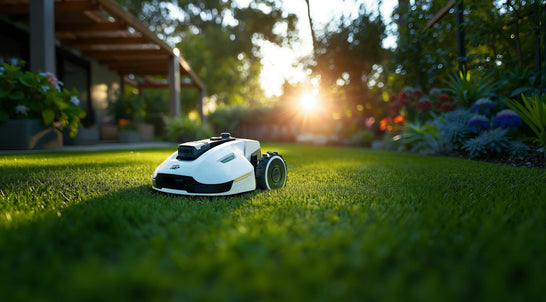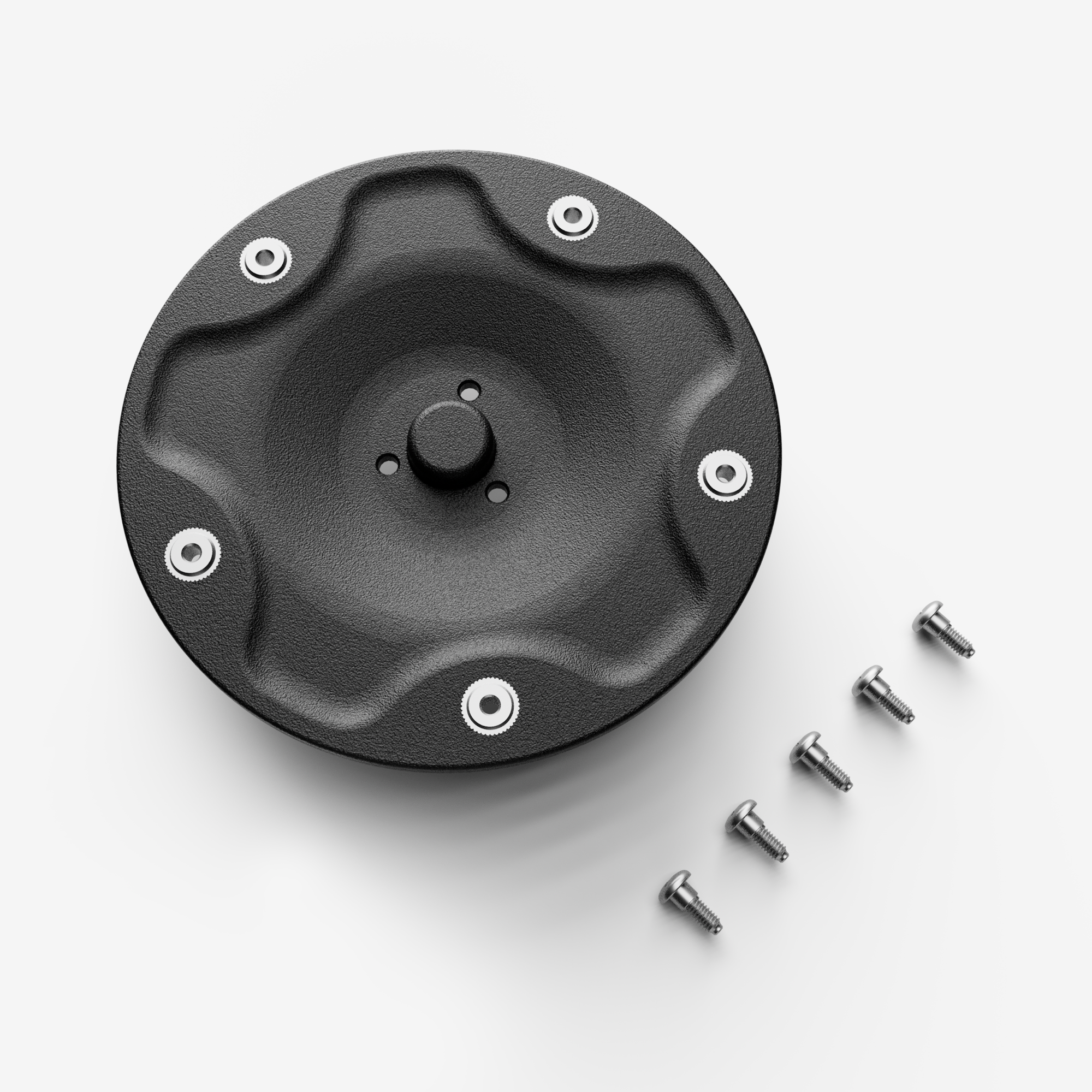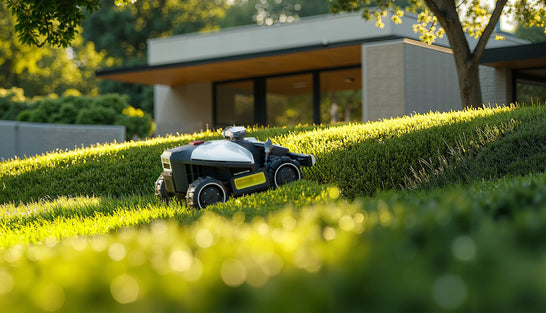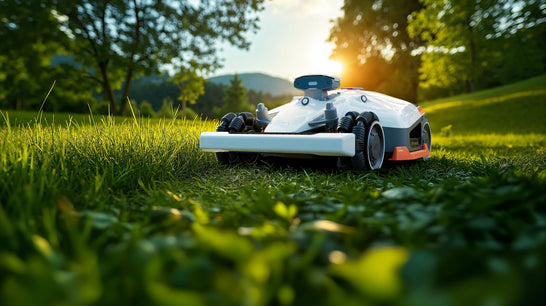A Lush, Green Lawn Starts with Proper Overseeding in Spring, but many homeowners dream of achieving a lush, green lawn. But if your lawn looks thin, patchy, or dull after a harsh winter, you might be wondering how to overseed a lawn in spring to bring it back to life. Overseeding in spring is an effective way to revitalize your lawn, enhance its density, and improve its overall health.
However, it's important to note that spring isn’t always the ideal time for overseeding all grass types. Read on to learn how to overseed a lawn in spring, when it works best, and what steps you should take to achieve great results.
What is Overseeding?
Overseeding is a straightforward but powerful lawn care technique where you spread new grass seeds over an existing lawn without removing the turf. Unlike starting a lawn from scratch, overseeding enhances your current lawn by:
- Filling in gaps and bare spots.
- Increasing turf density.
- Introducing improved grass varieties that are more resistant to diseases and better suited to your region’s climate.
The process doesn't require tearing up your yard, making it a convenient option for rejuvenating lawns damaged by foot traffic, pests, or winter stress.
Overseeding is especially effective for cool-season grasses like Kentucky bluegrass, perennial ryegrass, and fine fescue, which thrive during the mild temperatures of spring. However, certain warm-season grasses like Bermuda and Zoysia can also benefit from spring overseeding if done in regions where warm weather arrives early.
Benefits of Overseeding Your Lawn in Spring
Understanding how to overseed a lawn in spring is just part of the equation. Knowing why it’s beneficial will help you decide if this technique is right for you:
1. Fills Bare or Thin Spots: Overseeding helps cover those unsightly patches, creating a fuller and more uniform lawn.
2. Improves Grass Density: Newer grass varieties are often bred for improved resistance to pests and diseases, ensuring a healthier lawn throughout the year.
3. Enhances Disease Resistance: New grass varieties introduced through overseeding are often more resilient to pests and diseases, helping your lawn stay healthier year-round.
4. Boosts Curb Appeal: A thick, vibrant lawn instantly improves your property’s visual appeal, enhancing its overall value.
5. Prepares for Seasonal Stress: Overseeding in spring helps establish a strong foundation before the summer heat, heavy foot traffic, and potential drought conditions.
Best Time to Overseed a Lawn in Spring
Understanding how to overseed a lawn in spring starts with getting the timing right. Proper timing is essential for ensuring successful grass growth, and it largely depends on your region and the type of grass you're working with. Here’s a breakdown of when to overseed different grass types:
For Cool-Season Grasses
- Best Timing: Early spring, right after the last frost when soil temperatures consistently reach 50–65°F (10–18°C).
- Examples: Kentucky bluegrass, perennial ryegrass, fine fescue, and tall fescue.
- Regions: These grasses thrive in cooler climates, such as the northern and midwestern United States.
- Why Early Spring Works: Overseeding during early spring gives seeds ample time to establish strong roots before the heat of summer arrives, ensuring a lush and resilient lawn.
For Warm-Season Grasses
- Best Timing: Late spring to early summer, once soil temperatures consistently exceed 65°F (18°C).
- Examples: Bermudagrass, zoysiagrass, St. Augustine grass, and centipede grass.
- Regions: Ideal for the southern United States, where these grasses thrive in hot and humid conditions.
- Why Timing Matters: Spring overseeding works best in regions where warm weather arrives early. However, overseeding too early can result in poor germination due to insufficient warmth.
Additional Tips for Overseeding in Spring:
- Avoid Frost Risk: Make sure there’s no threat of frost before overseeding, as freezing temperatures can easily kill young grass seedlings.
- Account for Rainfall: Try to overseed when moderate rainfall is expected. Too much rain can wash away seeds, while too little can hinder germination.
- Avoid Late Spring Heat: Delaying overseeding can expose young grass to heat stress before it has a chance to properly mature.
How to Prepare Your Lawn for Overseeding in Spring
Proper preparation is essential to ensuring that your overseeding effort is successful. By following these steps, you'll create the optimal environment for your grass seed to germinate and establish strong roots.
Proper preparation is essential to ensuring that your overseeding effort is successful. By following these steps, you'll create the optimal environment for your grass seed to germinate and establish strong roots.
Step 1: Mow Your Lawn
Start by mowing your lawn shorter than usual—aim for a height of about 1.5–2 inches.
- Why It Matters: Cutting the grass low allows seeds to reach the soil more easily, improving seed-to-soil contact.
- Pro Tip: Remove all grass clippings and debris after mowing. This ensures sunlight, air, and moisture can reach the new seeds, promoting better germination. Highly recommend the Mammotion YUKA robot lawn mower, it's very easy to mow and collect at the same time.
Step 2: Rake or Dethatch
Eliminate thatch and debris buildup to prepare the soil properly.
- What is Thatch: Thatch is a dense layer of dead grass, roots, and organic matter that can prevent water and nutrients from reaching the soil.
-
How to Remove Thatch:
- For light thatch (under ½ inch thick), use a stiff rake to clear the surface.
- For heavy thatch, consider using a dethatching rake or a dethatching machine.
- Why It Matters: Raking also loosens the soil, providing better conditions for seed penetration and root growth.
Step 3: Test Your Soil
Conducting a soil test before overseeding ensures your lawn’s pH and nutrient levels are suitable for grass growth.
- Why It’s Important: Imbalanced pH or nutrient deficiencies can hinder seed germination and grass establishment.
-
Steps to Take:
- Test soil pH and adjust if necessary (aim for a pH between 6.0 and 7.0).
- If needed, apply amendments like lime or sulfur to correct pH levels.
- Add compost or organic matter to enhance soil texture and nutrient availability.
Step 4: Apply Fertilizer
Using the right fertilizer in spring boosts the chances of successful overseeding.
- Best Choice: Apply a starter fertilizer high in phosphorus (e.g., 10-20-10) to encourage robust root development.
-
Application Tips:
- Spread fertilizer after mowing and before seeding.
- Use a slow-release fertilizer to provide nutrients gradually over time.
- Avoid high-nitrogen fertilizers, as they promote excessive leaf growth at the expense of root strength.
Step 5: Choose the Right Grass Seed
Selecting the appropriate seed in spring is crucial for successful overseeding.
- Cool-Season Grass Seeds: Kentucky bluegrass, perennial ryegrass, and fescue varieties are ideal for early spring overseeding.
- Warm-Season Grass Seeds: Choose Bermuda, zoysia, or centipede grass if you live in warmer climates and plan to overseed later in spring.
- Seed Quality: Look for seed mixes with a germination rate of at least 75% to ensure good results.
- Pro Tip: Make sure the seed type matches your region’s climate and your lawn’s conditions for optimal growth.
How to Overseed a Lawn in Spring: Step-by-Step Guide
Now that your lawn is properly prepared, it’s time to dive into the overseeding process. Follow these steps to ensure successful growth and a lush, healthy lawn.
Step 1: Spread the Seed
Evenly distributing the grass seed is essential for uniform growth.
- For Small Lawns: Hand spreading works well, but be sure to cover the entire area evenly.
- For Large Lawns: Use a broadcast spreader for more efficiency and precision.
- Best Practice: Apply half of the seed while walking in one direction, then apply the remaining half while walking at a right angle to the first pass.
- Why This Matters: This cross-pattern technique ensures complete coverage, reducing the chances of bare spots and promoting even growth.
Step 2: Ensure Proper Seed-to-Soil Contact
After spreading the seed, it’s essential to help the seeds make good contact with the soil.
- Rake Lightly: Gently rake the lawn to work the seeds into the soil surface.
- Use a Roller (Optional): For smoother and flatter lawns, lightly pressing the seed into the soil with a roller can improve germination rates.
- Ideal Depth: The seeds should be just beneath the soil surface, not buried too deep.
- Why This Matters: Proper seed-to-soil contact is crucial for successful germination, ensuring that seeds can absorb moisture and nutrients effectively.
Step 3: Watering Your Lawn
Watering correctly is the most important part of learning how to overseed a lawn in spring.
- Initial Watering: Immediately after spreading the seed, water your lawn lightly but thoroughly.
- Consistent Moisture: Keep the top 1–2 inches of soil consistently moist.
-
Watering Frequency:
- During the first two weeks: Water 2–3 times daily (morning, midday, and evening).
- After Germination: Reduce watering to once per day.
- As Grass Matures: Gradually transition to a normal watering schedule of every other day or less, depending on your climate.
- Why This Matters: Seeds need continuous moisture to germinate successfully. Dry soil can result in poor germination rates and patchy growth.
Step 4: Fertilize Again (If Needed)
Providing additional nutrients after overseeding can enhance growth.
- When to Apply: If you haven’t already applied fertilizer during preparation, consider doing so about 2–4 weeks after overseeding.
- Best Choice: Use a balanced, slow-release fertilizer to support healthy root development.
- Avoid High-Nitrogen Fertilizers: Excessive nitrogen encourages top growth instead of strong roots, which can weaken new grass.
- Why This Matters: Proper fertilization encourages robust root growth, ensuring your new grass can better withstand stressors like heat and drought.

How to Do Post-Overseeding Care?
Learning how to overseed a lawn in spring doesn’t end with planting seeds. Proper post-overseeding care is crucial to ensure successful growth and a healthy, vibrant lawn. Here’s what you need to do:
1. Mowing
Avoid mowing your lawn until the new grass has grown to a suitable height.
- When to Mow: Wait until the new grass reaches at least 3–4 inches tall.
- Mowing Height: Set your mower blade to a higher setting to avoid cutting the grass too short.
- Why This Matters: Cutting young grass too early or too short can stress it out, damage fragile blades, and inhibit root growth. Longer grass blades help shade the soil, reduce water evaporation, and promote stronger root development.
2. Weed Control
While overseeding helps crowd out weeds over time, early weed control needs to be handled with care.
- Avoid Herbicides: Most chemical herbicides can harm young grass. Avoid using them until your new grass is fully established—usually after 6–8 weeks.
- Alternative Methods: If weeds are a problem, try using natural or organic weed control solutions or hand-pulling them.
- Why This Matters: Allowing your grass to grow strong and healthy before applying any weed control methods ensures it can resist pests and diseases naturally.
3. Reduce Foot Traffic
Protecting your newly overseeded lawn from damage is essential.
- Minimize Walking: Avoid heavy foot traffic during the first few weeks of growth, especially when seeds are germinating and the young grass is establishing roots.
- Create Barriers: If possible, use temporary fencing or signage to remind family members and pets to stay off the area.
- Why This Matters: Walking on your lawn too soon can compact the soil and damage tender new grass blades, severely hindering growth.
4. Keep the Lawn Well-Watered
Proper watering practices are key to ensuring the successful establishment of your new grass.
- Consistent Moisture: Keep the soil consistently moist during the first few weeks. Water lightly but frequently to prevent the soil from drying out.
- Transition Gradually: As the grass grows, reduce the watering frequency but increase the depth of each watering session.
- Encourage Deeper Roots: Shifting to deeper, less frequent watering helps your grass develop strong, deep roots that improve drought resistance.
- Why This Matters: Maintaining adequate moisture ensures good seed germination and encourages vigorous root growth for long-term lawn health.
Common Challenges and Solutions of Overseeding
Learning how to overseed a lawn in spring can be highly effective, but it’s not without challenges. Here are some of the most common issues homeowners encounter and practical solutions to overcome them.
1. Uneven Seed Distribution
If grass seed isn’t evenly spread, some areas may be over-seeded while others remain bare, leading to patchy growth.
Solution:
- Use a broadcast spreader for large lawns or a handheld spreader for smaller areas.
- Apply the seed in two perpendicular directions (crosshatch pattern) to ensure even coverage.
- Regularly check for areas with sparse coverage and add more seeds if necessary.
2. Poor Germination Rates
Even when you follow all the steps of how to overseed a lawn in spring, poor germination can occur due to low-quality seeds, poor soil conditions, or unfavorable weather.
Solution:
- Always use high-quality, fresh seeds with a germination rate of at least 75%.
- Test your soil’s pH and nutrient levels before overseeding. Most grass types thrive in slightly acidic soil with a pH between 6.0 and 7.0.
- Apply appropriate soil amendments if needed and add compost or organic matter to enhance soil quality.
3. Competition from Weeds
Weeds can outcompete young grass seedlings for moisture, sunlight, and nutrients, making it difficult for your new grass to establish itself.
Solution:
- Before overseeding, mow and dethatch your lawn to remove existing weeds and debris.
- Avoid using herbicides immediately after overseeding, as they can harm tender seedlings.
- Focus on improving soil health and maintaining consistent moisture levels to promote grass growth.
- Once established, the denser grass will naturally help crowd out weeds.
4. Watering Problems
Watering incorrectly is a common reason why overseeding in spring fails. Overwatering can cause seed rot or fungal growth, while underwatering prevents seeds from germinating.
Solution:
- During the first two weeks, water lightly but frequently, keeping the soil consistently moist (not soggy).
- Aim to water 2-3 times per day during the germination phase.
- As the grass starts growing, gradually transition to deeper, less frequent watering to encourage root development.
5. Fertilizer Misapplication
Using the wrong type or too much fertilizer can harm young grass rather than help it.
Solution:
- Apply a starter fertilizer with high phosphorus content to support root growth.
- Avoid high-nitrogen fertilizers which encourage leafy growth at the expense of root strength.
- Always follow the manufacturer’s guidelines and avoid over-fertilizing, which can burn your new grass.
Conclusion
Learning how to overseed a lawn in spring can transform your yard into a vibrant, healthy landscape. By following the essential steps—timing the overseeding process correctly, preparing your lawn, selecting the right seed, and providing proper aftercare—you’re setting your grass up for success.
While patience and consistency are crucial, the effort is well worth it. With consistent watering, careful fertilization, and attentive maintenance, you’ll soon enjoy a thick, lush lawn that naturally crowds out weeds and enhances the beauty of your home.
Remember, overseeding isn’t a one-time fix but rather a continual process to maintain a healthy, green lawn year after year. By applying the strategies and tips outlined in this guide, you’ll be well-equipped to achieve a lawn that’s the envy of your neighborhood.
Frequently Asked Questions
1. How do you overseed an existing lawn in the spring?
To overseed an existing lawn in the spring, follow these steps:
- Mow the Lawn: Cut the grass shorter than usual to allow seeds to reach the soil easily.
- Dethatch and Aerate: Remove thatch buildup and, if necessary, aerate the soil to improve seed-to-soil contact and enhance germination.
- Select Appropriate Grass Seed: Choose a seed blend suitable for your region and existing grass type.
- Spread the Seed: Use a broadcast spreader for even distribution across the lawn.
- Water Consistently: Keep the soil moist with light, frequent watering until the new grass establishes.
For a detailed guide, refer to this resource: How to Overseed a Lawn in Spring.
2. Can I just throw grass seed down on an existing lawn?
Simply scattering grass seed over an existing lawn without proper preparation is unlikely to yield successful results. Essential preparatory steps include mowing, dethatching, and aerating to ensure seeds make direct contact with the soil, which is crucial for germination. Neglecting these steps may result in poor seed establishment and uneven growth.
3. What month should I overseed my lawn in spring?
The optimal timing for spring overseeding depends on your grass type:
- Cool-Season Grasses: Early spring, as soil temperatures reach 50–65°F (10–18°C).
- Warm-Season Grasses: Late spring to early summer, when soil temperatures are consistently above 65°F (18°C).
Timing your overseeding appropriately ensures better germination and establishment.
4. Can you just sprinkle grass seed on a lawn?
Merely sprinkling grass seed on a lawn without soil preparation is insufficient for successful germination. Proper preparation—such as mowing, dethatching, and aerating—is necessary to ensure seeds contact the soil directly, promoting effective germination and growth.
5. Should I add topsoil when overseeding?
Applying a thin layer of compost or enriched topsoil (about 1/4 inch thick) over the lawn after spreading grass seed can enhance seed-to-soil contact, moisture retention, and nutrient availability, thereby improving germination rates. However, avoid applying a thick layer that could smother existing grass.
6. Does an overseeder put seed in the ground?
Yes, an overseeder, also known as a slit seeder, is a machine designed to cut shallow grooves into the soil and deposit seeds directly into them. This method ensures excellent seed-to-soil contact, leading to higher germination rates and more uniform grass growth.
7. Should you fertilize before or after overseeding?
Applying a starter fertilizer high in phosphorus before overseeding is beneficial, as it supports root development in new grass seedlings. Ensure the fertilizer is suitable for new grass to avoid potential damage.
8. Can you overseed without aerating?
While aerating before overseeding is highly recommended to alleviate soil compaction and improve seed-to-soil contact, it is possible to overseed without aerating. In such cases, thorough dethatching and proper soil preparation become even more critical to achieve successful germination.



